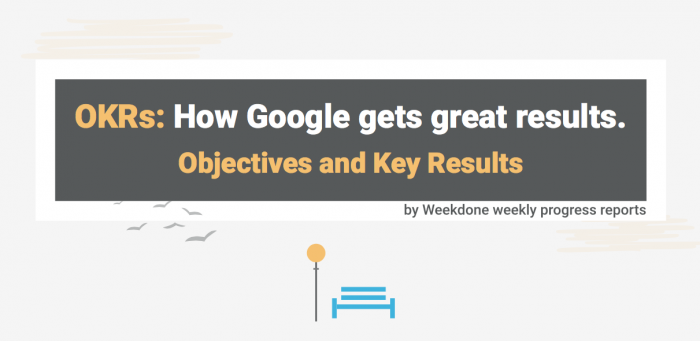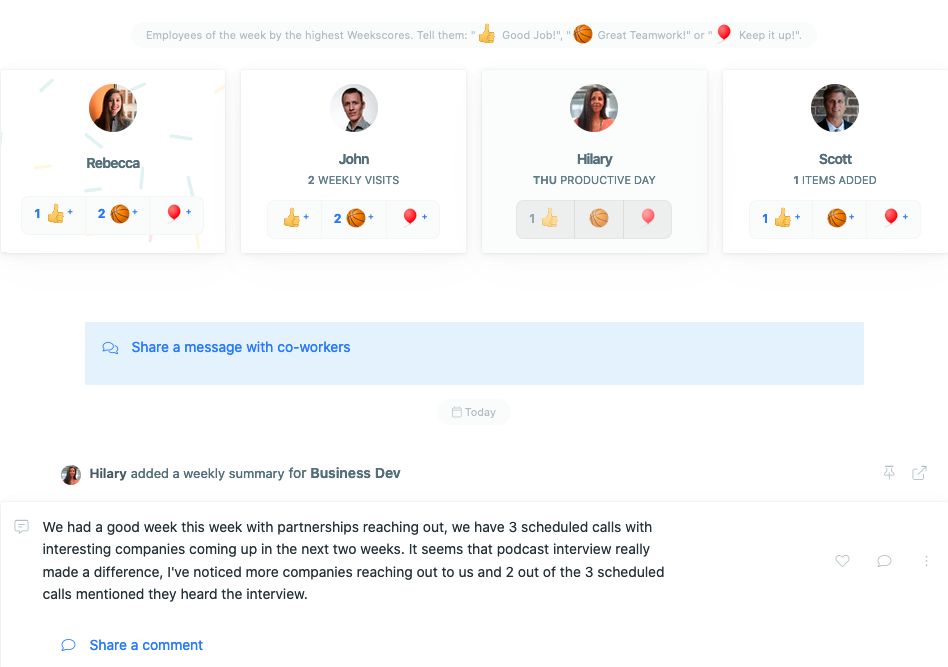Organizational communication or internal communication is a vital part of any company culture. And it has a meaningful effect on your business and your bottom line. Companies who prioritize good communication practices enjoy a lot of perks. More engaged employees, lower turnover rates, and satisfied customers – to name a few.

What is Organizational Communication?
In essence, organizational communication is the nervous system of your company. It makes sure management (the brain) knows what is going on, and that employees know what, how, and why to do specific tasks and projects. As Wikipedia puts it: “organizational communication is the study of communication within organizations. The flow of communication could be either formal or informal.”
Life is getting more intense
That was more than ten years ago. Both formal and informal organizational communication gets harder each year. The most obvious reason being the transition into remote work for many companies during 2020 into 2021. Many people experienced issues with job security, and in situations where tensions are high – employee’s expect more from their employer’s. Clear communication is vital during tough times.
With each year, more highly educated millennials enter the workforce. It is estimated, that by 2025, they´ll make up 75 percent of the workforce. Where does that leave the rest of us?
And even without these external pressures, in most teams, internal communication sucks…hard. As an employee, you don’t get enough information from your overworked manager. As a leader, you don’t seem to be able to explain to employees what they need to do and why they need to do it. Sound familiar?
In many teams this is the case. And it’s no one’s fault. It comes down to internal processes not being implemented correctly from the get-go. Or not being prepared for or even open to change. You can’t drive a car forward if you don’t understand how it works, right?
Shaking things up
If you want to improve your internal team communication, you need to start with taking inventory. Figure out what is currently working and what is not.
That requires research and getting feedback. You can start by doing a survey among the management and employees to find out what’s not working within your current system. From there, you can move forward with more in-depth analysis to find out the needs and pain points of employees and leadership. Here are 10 helpful questions to get you started on your feedback journey!
This feedback will allow you to clearly see what steps you need to take in order to foster great communication in your business.
Coming up with your plan
Next, you need to figure out what your internal communication plan will be. You have two things to answer here. The first question is based on the feedback and answers the question: “what do my people want?” The second question requires more research..”what can I implement that will help the entire team?” The bigger the team, the harder it is to satisfy everyone (and get management to sign up to it).
For me it helps me think about my co-workers as customers, and the product I’m selling is: the communication plan.
You need to find the right channels and tools to use with your team. Find a platform that really sells itself to your customers (co-workers). Your communication plan should makes things easier while encouraging engagement and increasing productivity.
Internal communication: employee perspective

“Why do I work here?”
As an employee with choices – I often need to ask myself that important question. And when I can’t find a meaningful answer anymore, I make the choice to leave.
The work routine can be a boring one. When I was working a 9-to-5, I saw my job as an activity that only paid the bills. This mindset isn’t just limited to those working as a barista, cashier, or factory worker. It exists in many offices as well.
The internal climate of a company plays an enormous role for employees when choosing where to work. Organizational communication is one of the main factors relating to job satisfaction.
Think about the job market
In the job market, employees have a lot of control over where and how they work. This means that companies need to communicate their needs and benefits very well. It’s the only way to find employees who suit your team. And it’s a way to keep them!
Aerva´s blog writes that “engaging employees is an ongoing and authentic practice that should not be lost in the sea of emails or poster board ‘easel farms’. Employee communications all comes back to changing the behavior of employees, sending the message about a safe, productive, quality conscious workplace.”
Aerva also points out the 10 benefits that good communication gives you. The most important of these are “open relationships with employees through honest communication so they trust management” and “a sense of community among employees so that their interactions give meaning to their work.”
Bad communication
Bad communication leads to confusion and misunderstandings in your teams. For employees this means bad working environment and mistrust towards the managers. As an employee why would I want to work in a place like this? After all, I have options.
Setting goals is a large factor contributing to good communication in organizations. Therefore, it pertains to employees just as much as managers. However, when employees aren’t super enthusiastic about change within the organization, goal setting systems tend to fail. Typically, everyone is stuck in the old ways (especially if the system is “no system”). Or the employee feels that learning a new system is a waste of time. At its very core though, having a management system is essential. Getting started with OKRs is just one way to approach this.
Once you have set up a decent communication, reporting and goal setting system, your employees will be much more invested in their work. They will be much more engaged.
The shocking low level of employee engagement
World wide employee engagement is very low at only 15 percent. These statistics are staggering. Not only are 85% of employees disengaged with their work, but most managers are as well.
A huge part of the workforce, from leaders to specialists, are not inspired to exceed expectations. Most of us are not enjoying our work and don’t see meaning in it. For a long time I thought this was normal. I believed that work is just something you have to do, not something you could enjoy.
Why increase employee engagement?
A lot of problems come from unengaged and uninspired employees.
All managers want their employees to succeed in their tasks. This drives the overall business goals forward. Disengaged employees have a harder time completing tasks. Productivity fails and projects fall behind.
Offering a space for employees to connect, collaborate, and encourage each other is crucial for your communication plan.
Helpful Tips for Improving Organizational Communication
There are a lot of articles out there about communication between teammates. However, the bigger, company wide information flow is a much more dire issue. The problem may be the distance with remote workers or multiple office locations. Or there may be inadequate communication systems that don’t fully support the information flow of the company.
If you’re working at a well-established company, you probably need to deal with some flawed system that was effective 10 years ago but just isn’t cutting it today. If you have recently grown into a bigger operation, your system might have come about organically and not have the adaptability and efficiency required for a growing team.
Either way, you need help dividing responsibility and making sure communication works in your company. Let’s be fair, everyone has a lot to do and so it’s easy to point fingers instead of taking action. As a result, everyone in the team suffers. Here is our guide to help avoid this situation.
Importance of Organizational Communication between teams

As a team leader there is a lot you can do to make sure other teams and departments get all the info that they require. But it can be hard work convincing other leaders to communicate with you.
I’ve seen it in almost every team I’ve worked in. There is a meeting. You decide to accomplish something. Then months pass and nothing gets done as everyone is thinking someone else should do it. Later there’s enough blame to pass around.
This is not very efficient, an at the end of the day, it will be the team leader’s fault if information is not passed on and projects get stuck. To combat that, you need to work hard to improve your teamwork.
A company wide system that works
The solution is setting up a company wide task management and goal setting system. If you’re using a good goal management software like, Team Compass, you don’t have to worry about it as much. All tasks can and should be assigned to specific individuals right away. As the tasks are public, it’s always clear who is responsible for what and a lot less work is left undone. As Henry Mason, Managing Director of TrendWatching told us: “Automated status reports save our managers up to 4 hours a week.”
Plans, Progress, Problems.
Team Compass uses the PPP – Plans, Progress, Problems methodology that is based on setting 3 – 5 tasks to everyone every week. These are the important thing employees have to get done. These can be assigned by the person themselves or by anyone else in the company. This helps to make sure that at every meeting you clarify, who is doing what.
You can be the hero who is taking the initiative and shows that a great information flow is worth the investment.
Status Reporting
Status reporting and the Plans, Progress, and Problems approach go hand in hand at Team Compass.
Everyone in the company should be updating their 3-5 tasks (Plans) every week and tracking them as they finish (moving them to Progress). When problems arise, write them down and encourage transparency – life happens. If you track these problems as they occur – management has a clear understanding of why a project progressed slower than another.
Once a week, let’s say 3pm on Fridays, employees should take 5 minutes to complete their reports and send to management. These reports clearly show: what you planned, what you accomplished, and any problems that slowed you down. Here’s an example of a status report from Team Compass
Objectives and Key Results for goal setting
Team Compass also uses the Objectives and Key Results (OKR) methodology. With OKRs you set quarterly goals for each person and team and follow the process toward those objectives every week.
OKRs give you a long-term view that helps you see if your weekly tasks contribute to your long term goals. Keeping both weekly tasks and quarterly goals in front of you, you can make sure everyone sees how their activities benefit team goals in the long term.
With the combination of weekly reporting and quarterly goals, everyone will always know who is responsible for what and why. This will help to bring all teams closer together as you can see how you’re working towards the same outcomes.
HR’s Role in Organizational Communication
HR department has a huge role to play in achieving good communication in business organizations. When hiring new people, it is HR’s job to make sure the new people fit the company. And that the communication system you have set in place, works for them.
According to a recent study by the Deloitte University Press, HR leaders consider culture and engagement their number one challenge. Andrew Harvey, Director of Internal Communications Practice at the VMA Group, has said: “The line between the internal communication and human resources is becoming increasingly blurred. Both functions are engaging with the same audience, so it makes sense that the two work together. And with both departments constantly seeking a stronger voice in the boardroom, collaboration could be a real game-changer.”
Organizational communication is everyone’s job
HR is responsible for making sure different parts of the company and different people are working together effectively. In companies that do not have a separate internal communications specialist, their tasks fall to HR as well. But HR alone can not build a communication system that satisfies everyone. This falls to top management and IC experts. HR´s role, the most vital task, is to hire people who fit into the culture your company has or is building towards.
Choosing a right person for a job is a lot like finding a good match when looking for someone to start a family with. And like dating, hiring usually happens online.
In Tinder and other dating apps, you look at a person’s profile and make a decision: interested or not. At the same time, to get a match, they must also be interested in you. So it is important to be as attractive of an employer as possible. You must show your best qualities, and company culture right away to get possible “matches”.
If you’ve chosen a perfect candidate, you must think hard on what you can offer them and why they should choose your company over another.
Divorce is expensive
With real unemployment very low, people have a lot of choice when it comes to finding work. Younger workforce doesn’t make decisions based solely on salary. They want perks, a good working environment and enjoyment. If their needs are not met they won’t stay for long.
A study of 7272 U.S adults by Gallup showed that 50% of the workers had at some point left their job because of their manager or leader didn’t engage with them enough. Workers are happy if their work is reviewed and praised because it sends out a message: “your work matters.”
Employees who don’t stick around might cost you a lot of money. Not only is hiring process tiresome for managers and leaders, it takes time and resources to educate new people. That is why, it’s very important to make the right decision when hiring. Because a “happily ever after” is a lot cheaper than swiping for a new employee every year.
Ban e-mail to improve communication in the workplace
The invention of email has definitely been one of the turning points in the way we handle communication in the workplace.
Who do we owe the credit to? We should thank Shiva Ayyadurai. He holds the first copyright for “EMAIL” — a system he began building in 1978 at just 14 years of age.
Although email has been proven to be a good method for quick communications, it sets great barriers to team collaboration. Decades later from its invention, it has stopped being an efficient way for everyday collaboration.
Why?
In her Huffington Post article, Kate Bratskeir explains it so well. You see, email is like a game of Tetris. At first, you start playing it with a smile on your face and a goal to clear your inbox. Even if you manage to 0 out your inbox, the minute you turn away or go to sleep, you get 100 new emails waiting for you.
Some of it might need your immediate attention, some provide great knowledge. Most of it is unavoidably pointless or spam. As a result your mornings go wasted. Each time you take one step forward towards an inbox-zero, you also take two steps back.
Email invades our homes
Email has even forced itself into our homes. You probably manage emails when you get home at night. It’s often the first thing you check in the morning when you wake up. Just to keep your head above water.
The sooner you accept that it’s a losing battle, the sooner you can start making time for the work that really matters.
Looking at the numbers
To put this game of Tetris into figures, we can say that the average office worker receives 110 messages a day and spends 28% of his time handling email. This means employees spend 13 hours per workweek reading and answering emails.
Additionally, a professional who earns around $75,000 a year costs a company $20,990 per year. Somewhere in between these coffee & lunch breaks and emailing, employees are required to do their job. A job that actually produces valuable output for the company.
Email might not be the most effective means of communication in the workplace, but it is surely still the preferred one. After all, email is a social network that’s three times the size of Facebook. I think it’s safe to say that nearly everyone with internet access has an email account.
Therefore, banning email is by no means an easy task. You’ll always encounter resistance, no matter how noble the plan itself might be. In the end, you’ll need to find the best methods for efficient collaboration and communication in the workplace. Here’s why I think email isn’t the best choice:
Why email is terrible for organizational communication?
The average corporate user spends 25 percent of the workday answering and sending emails.
People spend nearly 1500 hours a year on writing emails, searching for information and attempting to “collaborate” internally. Actually, we spend more time dealing with email than collaborating and communicating with our co-workers. Using more social technologies in the workplace could reduce email use by 25%.
It wastes more time than you realize

It has been estimated that from the email you receive:
- 50% can be deleted or filed.
- 30% can be delegated of completed in less than two minutes.
- 20% can be deferred to your Task List or Calendar to complete later.
Keeping this in mind, you actually have 4 options with every email you receive:
- Delete it
- Do it
- Delegate it
- Defer it
It kills valuable tacit knowledge
For every 10 minutes we spend on our actual job, we spend 7 minutes on email.
In its nature, tacit knowledge is already extremely difficult to transfer from one team-member to another. In email threads, this valuable knowledge gets buried deeper and deeper every minute of every day. The more time we spend on email the less time we have to contribute in a meaningful way.
It distracts people and kills focus
On average, employees check their email 36 times a day. It takes 16 minutes to refocus after handling an incoming email. We are expected and expect ourselves to get answers quickly via email. What we don’t often realize is that switching between email and our actual task at hand damages our ability to focus.
A 2012 study from Prof. Mark and several colleagues found that workers who were cut off from their email focused for longer periods of time, switching screens less frequently, and were less stressed, as measured by heart-rate monitors. We live in a world of constant notifications, keeping us from reaching greater potential.
Group conversations grow out of hand
Did you know? Atos removed email from its 74,000+ team and improved productivity immediately. When Thierry Breton, CEO of Atos, estimated that a mere 10% of his workers’ emails were actually useful and productive, he instituted a zero-email policy.
Killing email has a great potential to bring about positive changes. Digging through inbox to come to an understanding who has said what is unproductive. Everyone should just stop responding to emails with an unnecessary “thanks” or “I got it”.
We expect and are expected to respond to emails within a matter of hours. All while completing the non-email related tasks – you know, the important tasks our jobs require of us. No wonder companies with effective communication practices enjoy 47% higher total return to shareholders. Once again, social technologies provide the opportunity to raise the productivity of interaction by 20%.
It gives an overview
Checking email is the most popular activity on smartphone. 78% of people do it regularly on mobile phones.
You allocate a lot of time to email. Expect to get answers fast. Still, it fails to give an overview of what needs to be done and who is responsible for what. The information might be somewhere, hiding inside those long email threads and among the thousands of messages. Yet, more often than necessary the information gets lost, either lost in translation or just lost between different filters.
Use the phone for calling if an emergency strikes. Don’t expect people to be sitting in their inboxes every minute of every day. When there’s an emergency – call. When there’s a task to be delegated – use better methods that give a better overview.
It has no transparency
In its nature, emails are private. They are between the sender and the receiver. While it might be a great method for dealing with discrete issues, it’s definitely a barrier in team collaboration. Over time this will restrict others from being able to benefit from this knowledge transfer.
It brings confusion
Have you ever come to a conclusion that it actually takes longer to process an email than it does to write one. Thanks to all the CC’s and BCC’s, information gets confusing quickly. Sometimes, lost altogether. We should stop using the “reply all” button except when critically necessary.
Ever made an awkward, downright embarrassing reply-all mistake? Don’t worry, we all have. But this also means you most certainly are aware of the downsides of an email. As a matter of fact, Nielsen management, has come up with a brilliant solution. They got rid of the reply-all button from its internal email to make employees more mindful about who they include on a message.
In this light, it’s easy to understand why Y-Combinator’s Paul Graham calls replacing an email a “frighteningly ambitious startup idea.” But why shouldn’t you replace it? There are so many countless problems baked into it
It’s anti-social
The last but certainly not the least is the simple fact that email isn’t social. Collaboration processes, on the other hand, demand more flexible and social ways to communicate with each other. 25% to 30% of time spent on email could be saved if the main channel for collaboration is moved over to a social platform.
I’m not trying to say that email is all bad. It fulfills its purpose as a way for quick contact. But if you’re looking for a solution that saves time and makes the collaboration process more transparent, you should choose a social platform. But keep in mind that simply implementing a social tool doesn’t do the trick. These tools need to be accompanied by management change and commitment.
If you’re looking for a quick recommendation on which social platform to choose, we would definitely advise you to give Team Compass a try. It’s simple, yet efficient internal communication platform for teams and weekly progress reports for managers.
How to build organizational communications with OKRs
One of the most important aspects of having good communication in business is to have clear, universally understood goals for your company, departments, teams, and employees. If everyone knows why and which tasks they are doing – and where the company is going, they will be more engaged and motivated. Meaning, they will be more invested in their work.
Good goal setting on a company level gives purpose to all employees and makes them work harder. And one of the best ways to set goals is the Objective and Key Results (OKR) methodology.
What are OKRs?
Objectives and Key Results (OKR) is a popular management strategy for goal setting within organizations. The purpose of OKRs are to connect company, team, and personal goals to measurable results while having all team members and leaders work together in one, unified direction. It is easy to understand, why this has a positive effect on organizational communication.
Many leaders who hear about OKRs, instantly think that this is the system that will move their team or company forward. It is a goal setting system that must be implemented right now to fix the problems their company has.
The system sounds amazing. The book “Step by Step Guide to OKRs” says that “OKRs, on a personal, team, and company level make up a system that shows how everything one person does connects to the work of others. If an employee knows that not meeting his goals makes achievements harder for people in other departments, they will want to try harder. When everyone knows how their work matters, it increases overall engagement, motivation, and determination. It’s a psychological effect: no one wants to be the weakest link, so they’ll try harder.”
The main benefits of the OKR methodology are:
- Always knowing what’s happening in your team. Objectives show you what is happening in your team and company. Key Results let you know the status of everyone’s Objectives.
- You can make more informed decisions. When using OKRs, you can quickly see when an indicator underperforms, so you can be proactive and take action before any problems arise.
- Focus on the work that matters. With OKRs you’ll know what needs to be accomplished each week and quarter. As well as who is responsible for it. This will keep large company and team Objectives in focus so everyone can plan their day and week with the company vision in mind.
It is so much easier to understand as you think about it as a relationship. At first, you feel excitement. You are enthusiastic and think nothing can go wrong. Everything seems easy and logical. But to really gain the benefits, you must work hard on it.
However, setting up OKRs is only the first step in a long journey of using them. Like in a relationship, you must understand that this is a long term investment and commitment to a process. Just starting using it will not help you at all in the long run.
Setting up OKRs as part of your organizational communication

- Objectives. You start by defining 3-5 key objectives on company, team or personal levels. Objectives should be ambitious, qualitative, time bound, and actionable by the person or team.
- Results. Under each Objective, define 3-5 measurable results. Key results should be quantifiable, achievable, lead to objective grading and be difficult, but not impossible. OKR results can be based on growth, performance, or engagement. Often they are numerical. But they can also show if something is done or undone, so a binary 0 or 1.
There are 3 different ways you can start using OKRs:
- With a pilot team. Some companies choose to first roll out OKRs to only one team in the company before rolling it out to subsequent teams. This can be a good way to work out any kinks in your OKR cycle. However, the downside of this approach is that it will take longer for your organization to get the full value out of OKRs.
- Starting with team leaders. Other companies prefer to initially roll out OKRs to team leads and managers. This simplifies the OKR process. Managers and team leads will be very involved in the OKR process. It’s good to get them started first. Then it will be easier for them to implement it with their team. The downside to this method is the same as the previous methods: it will take longer to get everyone on board.
- Going all in with the entire company. Implementing OKRs with everyone at once is a daunting task. But in SME’s or companies with flat hierarchies, it can work quite well.
Getting the full value out of using OKRs can take 2-3 quarters. The sooner you start, the sooner you can start seeing the value. If you do decide to start with everyone right away, it can be easier to just start with Company level and Team level OKRs. On personal level have the individuals focus on updating their weekly plans.
9 organizational communication tools you’ll love
There are many tools that promise to help improve communication in your business. And a lot of them are very effective and useful. However, the pure number of different tools makes it terribly hard for a leader to choose which tool is most cost effective for you. We have compiled a list of the best tools to make your life a little bit easier.
Team Compass
Team Compass by Weekdone is an online goal setting and weekly planning platform where you can set goals using the Objectives and Key Results (OKR) framework. You can also track your company’s weekly tasks and progress. For your organizational communications, it helps you automate all of your reporting. So it saves time for both employees and management. Team Compass is good for getting a quick overview of each employee’s activities separately. That makes it easier to know not just the status of your projects and goals, but also the status of employees.
Slack
Slack needs little introduction. It is one of the most popular team communication software out there. While it is best known for being a chat platform, Slack has more than a 1,000 apps and resources integrated into its platform. So, for a communication expert, that gives many options on how to improve your communications. As they say themselves: “this is where work happens”.
Use Slack to improve communication
Skype
Skype is one of the most popular communication apps in the world. It has everything you need for day-to-day communication in the office or in a remote team: chat, voice conferences, file sharing, and the ability to make phone calls.
Try Skype
Basecamp
Basecamp is a team collaboration and communication software that makes it very easy to track work and projects. It helps you increase accountability, communicate more efficiently, and keep everyone on the same page.
Get Basecamp to increase accountability.
People HR
People HR is a simple web-based HR platform that is a good fit for small and medium sized companies. It was built by a compact team of HR veterans who spent most of their career in Human Resources using HR software.
Understand your communications with People HR
Bitrix 24
Bitrix24 is basically a social media platform for your team. It is a suite of social collaboration, communication and management tools for your team. However, like many similar system it can be hard to learn and navigate at first. Still, it is worth it.
Get Social with Bitrix24
ProofHub
ProofHub is an advanced online project management software & collaboration tool. You can plan your projects using tasks, charts, calendar, custom roles and more. Features like Group chat, Online discussions and Proofing tool can help in collaboration within the team as well as with clients. The price is right for a small and growing team, as ProofHub charges a flat monthly rate regardless of how many people use the account.
Project Management with ProofHub
Mingle
Mingle is an agile work planning tool that lets you organize work across teams and projects. It has an easy to understand design that gives you a quick overview of your team’s work. It’s program planning feature gives program managers the ability to visualize a program’s timeline and objectives. Once a program’s plan and objectives have been created, program managers can easily check on the plan’s progress, adjust their plan as necessary, or give extra support to teams that need it.
Try Mingle for planning
All these apps have a potential to improve your company’s or team’s organizational communication. Which one to use, depends on your specific needs.
How do you make such an impactful decision for your team or company?
Decision Making for Leaders
As a leader you’re only as good as your last decision. Furthermore, as Dave Girouard, CEO of personal finance startup Upstart said: “All business activity really comes down to two simple things: making decisions and executing on decisions. Your success depends on your ability to develop speed as a habit in both.”
Nevertheless, making decisions is a complex process that requires a lot of input and energy. So, what are the frameworks that could help you not only make quick, but better decisions as a manager? I would like to show you one of the easiest techniques out there.
The Worth-Your-Time Test

When Girouard worked with Larry Page, Eric Schmidt and Sergey Brin at Google, he learned an important lesson. The first step to decision-making process is to begin by calculating the time and effort each decision is worth, who needs to have input, and when you’ll arrive at an answer. According to Girouard, Eric Schmidt always made sure that decisions were made on a specific timeframe – a realistic one – but a firm one.
I’m not sure if the guys at Google used this exact technique, but the Harvard Business Review Guide’s worth-your-time test is one of the easiest and quickest way to make decisions.
Imagine being faced with a decision. Or imagine that someone comes to you with a request. Ask yourself:
- Am I the right person?
- Is this the right time?
- Do I have enough information?
If the problem or request fails the test – if the answer to any of these questions is “no” – then don’t do it. Pass it to someone else (the right person), schedule it for another time (the right time), or wait until you have the information you need (either you or someone else needs to get it).
That was pretty easy, right? I love these 3 questions, I use it myself and it is perfect for making quick decisions.
What goes into the decision-making process?
Making and communicating decisions well is a vital part of organizational communication. Although, the worth-your-time test is easy and quick, sometimes the decision-making process is more complex than that. Mike Myatt, leadership advisor and Forbes Leadership columnist, has broken the decision-making process into 6 metrics which will minimize the chances of making a bad decision.
- Perform a situation analysis. What is motivating the need for a decision? What would happen if no decision is made? Who will the decision impact?
- Subject your Decision to Public Scrutiny. If your decision were printed on the front page of the newspaper how would you feel? Have you sought counsel and/or feedback before making your decision?
- Assess the Risk/Reward Ratio. What are all the possible rewards, and when contrasted with all the potential risks?
- Assess Whether it is the Right Thing To Do. Standing behind decisions that everyone supports doesn’t particularly require a lot of chutzpah.
- Make The Decision. Perhaps most importantly, you must have a bias toward action. Moreover, you must learn to make the best decision possible even if you possess an incomplete data set. Don’t fall prey to analysis paralysis, but rather make the best decision possible with the information at hand
- Always have a back-up plan. The real test of a leader is what happens in the moments following the realization they’ve made the wrong decision. Smart leaders always have a contingency plan knowing circumstances can sometimes fall beyond the boundaries of reason or control – no “Plan B” equals a flawed plan.
Organizational communication requires constant work
Many entrepreneurs like to build teams, improve internal processes, and set up new systems. Making these changes a lasting part of the company culture is equally important. No system of organizational communication or culture works unless you and your team work on it daily. Therefore, if you want to start having a more clear and transparent organizational communication, try out Team Compass with your team.
Team Compass makes it simple to improve communication in your business and increasing visibility in your team. Just sign up for our free trial at teamcompass.co, invite your employees, and you’re all done. In less than a week, you will get your first structured employee progress report via e-mail from your people.
